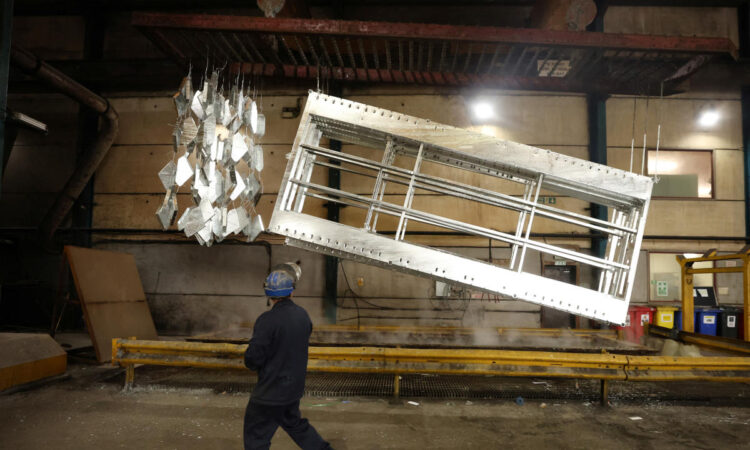

UK manufacturing production declined in March, after recording its first growth in eight months in February.
The S&P Global/CIPS UK Manufacturing PMI scored 47.9 in March, down from February’s seven-month high of 49.3.
Any score below 50 is considered a contraction, meaning the sector has been in decline for eight months in a row.
“The downturn in output was driven by declines in both the consumer and intermediate goods sectors. In contrast, investment goods production rose for the second month in a row,” S&P Global said.
While total new orders saw a slight increase after a nine-month contraction, order book levels remain low.
Read more: UK house prices in biggest fall since 2009
The survey showed that average supplier delivery times saw the biggest improvement for three decades.
“UK manufacturing production fell back into contraction at the end of the opening quarter, as companies scaled back production in response to subdued market conditions,” Rob Dobson, director at S&P Global Market Intelligence, said.
“Although total new orders saw a fractional increase, this followed on from a nine-month sequence of contraction and suggests that order book levels remain low overall. Declining new export order intakes remain a significant drain on demand, offsetting signs of a modest revival in the domestic market.”
Business optimism strengthened to a 13-month high, with almost 60% of manufacturers forecasting output to rise over the coming year. The downturn in output was driven by declines in both the consumer and intermediate goods sectors.
In contrast, investment goods production rose for the second month in a row.
“March was a month of two halves where supplier delivery times saw the biggest improvement for three decades but the continued weakness overall in new order levels dragged manufacturers further back into the abyss of contraction,” John Glen, chief economist at the Chartered Institute of Procurement & Supply, said.
Read more: Jeremy Hunt refuses to rule out massive UK fuel duty hike next year
“It was the continuing spartan landscape in terms of marketplace opportunity that was largely to blame. The small uplift in new homegrown orders had little effect with months of low demand to recover from and whilst exports continued to plummet affected by exchange rates.
“This domino effect meant manufacturers scaled back purchasing as a way of maintaining cashflow and reduced operational capacity levels through job shedding strategies for the sixth consecutive month.”
Watch: What is a recession and how do we spot one?
Download the Yahoo Finance app, available for Apple and Android.






